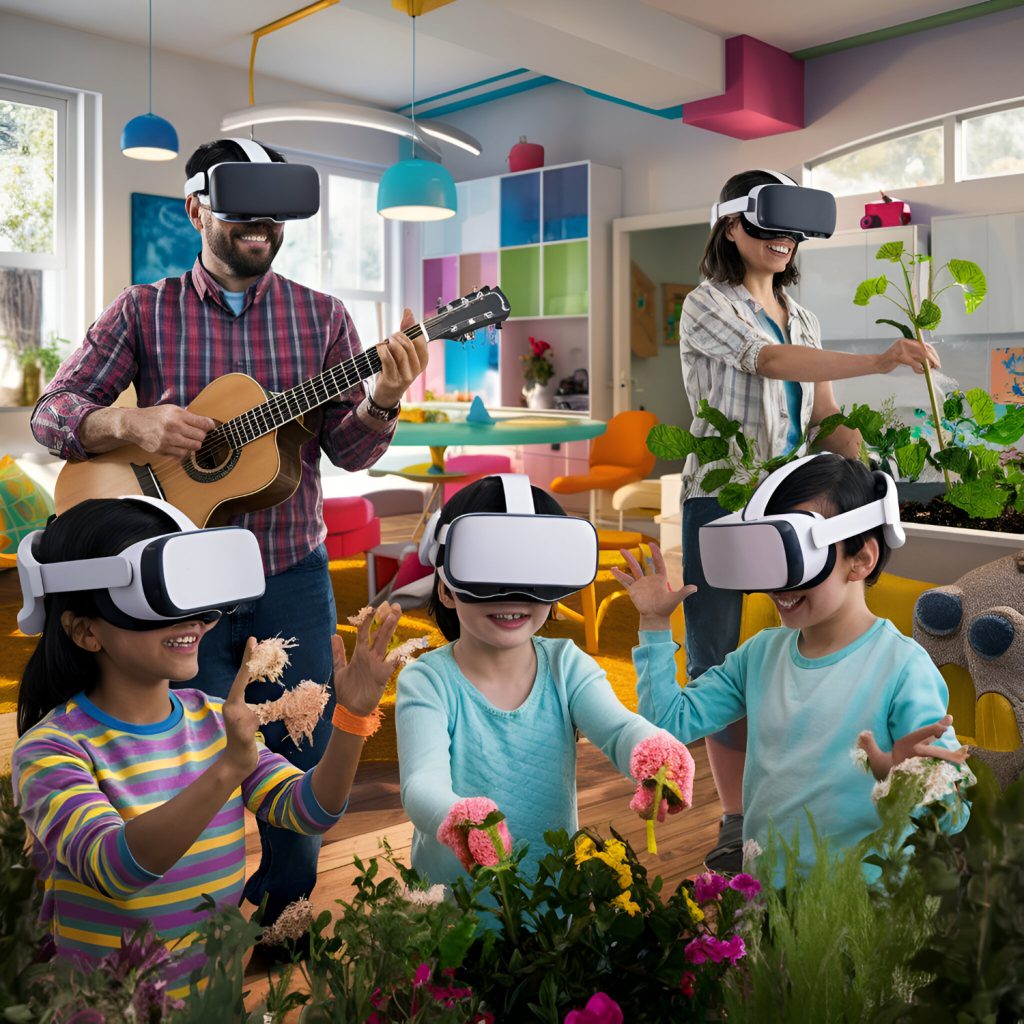
How Immersive Technology is Revolutionizing Education and Training
Immersive technologies such as Virtual Reality (VR) and Augmented Reality (AR) are transforming the landscape of education and professional training in unprecedented ways. These technologies are enhancing traditional learning methods by creating interactive, hands-on experiences that engage learners in ways that textbooks and videos simply cannot. From virtual classrooms to real-world simulations in fields like medicine, engineering, and more, VR and AR are reshaping the way we acquire knowledge and develop skills.
1. Virtual Classrooms: A New Era of Learning
In a traditional classroom, students often find it difficult to visualize abstract concepts or participate in engaging, real-time interactions. With the advent of VR, however, virtual classrooms are becoming a reality. These immersive environments enable students to interact with digital content in an intuitive, experiential manner.
VR-based learning platforms allow students to attend lectures, participate in discussions, and engage with content in three-dimensional spaces. For example, platforms like Engage and ClassVR offer VR-enabled learning experiences where students can explore virtual environments such as historical landmarks or biological systems. This experiential learning significantly enhances understanding and retention.
2. Hands-On Simulations in Medicine
One of the most impactful areas of immersive technology is in medical training. VR and AR are making it possible for students and professionals to practice complex surgeries and medical procedures without the risk of harming patients. This is particularly beneficial for hands-on disciplines where practical experience is critical.
Medical institutions are increasingly adopting VR-based simulations to train students on procedures such as surgery, diagnostics, and emergency response. For example, Osso VR and Medical Realities are using VR to simulate surgeries, allowing medical students to practice on virtual patients before ever stepping into an operating room. This not only provides a safe environment for learning but also allows for repeated practice to ensure proficiency and confidence.
3. Engineering and Technical Training: Recreating Complex Systems
In engineering, AR is being used to enhance learning by overlaying digital information on physical components. This allows students to interact with real-world objects while gaining access to technical data that helps them understand how complex systems work.
For example, Siemens is leveraging AR to help students and professionals visualize and interact with engineering systems like machines and factory equipment. AR can display digital schematics or real-time data overlaid on the physical object, providing a richer understanding of how components function together. This is particularly beneficial for fields like mechanical and electrical engineering, where hands-on, visual learning is critical.
4. Training in Dangerous or High-Cost Environments
Many professions require training in environments that are either dangerous or expensive to replicate in real life. VR allows trainees to simulate hazardous conditions safely. For instance, in the field of aviation, VR simulations are used to train pilots in emergency situations without the need for a costly or risky flight training session.
Similarly, AR is being used in industries like construction, where workers can visualize building projects in 3D before breaking ground. This allows them to identify potential problems and make adjustments in real time, ensuring safer and more efficient construction processes.
5. Accessibility: Making Education Available Worldwide
One of the most exciting aspects of immersive technology is its potential to make education accessible to anyone, anywhere. VR and AR allow learners from across the globe to access high-quality training and educational resources, regardless of their location or economic status. In remote or underserved regions, VR and AR can bridge gaps in access to top-tier education and professional training.
For instance, Alcove VR, developed by AARP, is bringing virtual learning experiences to senior citizens, allowing them to attend classes, participate in interactive social activities, and explore the world in new ways from their own homes. This kind of accessibility has the potential to revolutionize lifelong learning and professional development for people of all ages.
6. Improved Retention and Engagement
Studies have shown that immersive learning significantly improves retention rates compared to traditional methods. In one study by PwC, employees who used VR-based training were four times faster to train and four times more focused than their peers in traditional classroom settings. This is largely due to the interactive, hands-on nature of immersive learning, which keeps learners engaged and encourages active participation.
By providing real-world, interactive experiences, VR and AR make abstract concepts tangible, which leads to better understanding and long-term retention. The immersive nature of the technology also enhances focus, as learners are fully immersed in the experience without distractions.
Why It Matters
The adoption of VR and AR in education and training is not just a passing trend—it’s a fundamental shift in how we approach learning. These technologies allow for a level of engagement, interactivity, and accessibility that traditional educational methods cannot match. As immersive technologies become more affordable and accessible, their impact will only continue to grow, making education more interactive, hands-on, and globally available.
In an increasingly competitive job market, the ability to provide real-world, immersive training and educational experiences is crucial for institutions, employers, and learners. VR and AR offer the tools needed to bridge the gap between theoretical knowledge and practical, real-world applications, ensuring that learners are better prepared for the challenges they will face in their careers.
By embracing immersive technology, educators and trainers can create more dynamic, efficient, and engaging learning environments that will shape the future of education and professional development.
Hey
I'm Emma!

Lorem ipsum dolor sit amet, consectetur adipiscing elit. Ut elit tellus, luctus nec ullamcorper mattis, pulvinar dapibus leo.
